Author: Super User
Διαμονή
Blessed with the beauty of nature’s best palette, the scenery of Cyprus unfolds across glittering coasts, rolling mountains, fragrant forests and rugged headlands. From the warm shores of the mainland to the unspoiled and cool oasis of the Troodos mountain range, nature lovers, artists, photographers and explorers will all delight in meeting shy creatures, and discovering rare plants that peep out amidst waterfalls, coves, woodland, winding trails and secluded sandy beaches. As the island is on the migration path between Europe, Asia and Africa, Cyprus is a birdwatchers dream, with flocks of flamingos frequenting the salt lakes, and many other significant species passing through or nesting. And deep in the forests, the national animal – the Mouflon – roams freely, with catching a glimpse of this timid, wild sheep a real treat for locals and visitors alike. Exotic and rare forms of wildlife also give Cyprus a special touch. Green and Loggerhead turtles breed on the island’s sandy beaches in summer, while the Mediterranean Seal and dolphins have also been seen swimming in the warm, calm, crystal clear seas of the island. Botanists and herbalists will equally appreciate the island’s green side, with a large number of local herbs and endemic plants, including the Cyprus orchid, tulip and crocus waiting to be stumbled upon along winding nature trails and paths less travelled. From stunning sunrise to breathtaking sunset, the natural allure of Cyprus is both magnificent and inspiring… and all waiting to be uncovered.
Γαστρονομία
Cyprus Videos
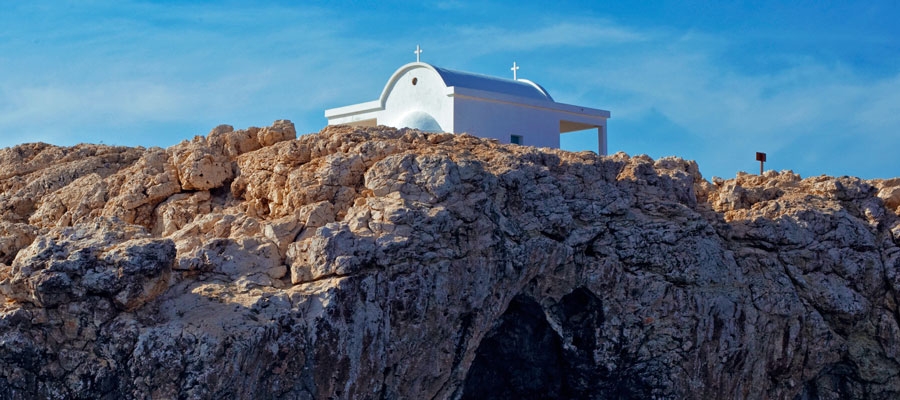
Αγία Νάπα και Θάλασσα: Μια διαφορετική διάσταση
Ο περίπατος αναβάλλεται μέχρι νεοτέρας ειδοποιήσεως
Ο περίπατος αυτός θα αναδείξει την σύνδεση της Αγίας Νάπας με την θάλασσα καθώς επίσης και το πώς ένα μικρό ψαροχώρι στο νοτιοανατολικό άκρο της Κύπρου έγινε ένα κοσμοπολίτικο θέρετρο. Οι συμμετέχοντες στην ξενάγηση θα επιβιβαστούν σε ένα αναπαλαιωμένο παραδοσιακό λεωφορείο και θα κατευθυνθούν προς τα ανατολικά της Αγίας Νάπας. Πρώτος σταθμός η εκκλησία του Αγίου Επιφανίου, η οποία βρίσκεται πάνω σε ένα ύψωμα, με τον επιβλητικό ξύλινο σταυρό της να λειτουργεί ως πυξίδα για τον κάθε προσκυνητή. Επόμενη επίσκεψη το Εθνικό Δασικό Πάρκο του Κάβο Γκρέκο. Το λεωφορείο θα ανηφορίσει προς τον Κάβο, έναν λόφο της περιοχής όπου οι συμμετέχοντες θα έχουν την ευκαιρία να θαυμάσουν την απρόσκοπτη θέα προς τα τέσσερα σημεία του ορίζοντα: προς στα ανατολικά το ακρωτήρι Πηδάλιον όπου εκεί βρίσκεται ο φάρος και οι εγκαταστάσεις ενός Γαλλικού ραδιοσταθμού· στα δυτικά ξεδιπλώνεται η Αγία Νάπα· στα βόρεια το Εθνικό Δασικό Πάρκο του Κάβο Γκρέκο και τέλος προς τα νότια το απέραντο γαλάζιο της θάλασσας και η βραχώδης ακτογραμμή του ακρωτηρίου. Φεύγοντας από το Κάβο Γκρέκο θα γίνει μια σύντομη στάση στη Γέφυρα των Ερωτευμένων και στη θαλασσινή σπηλιά που βρίσκεται εκεί κοντά. Ακολουθεί ένα 20λεπτο διάλειμμα για καφέ και η ξενάγηση τελειώνει με μια επίσκεψη στους Τάφους της Μακρονήσου που χρονολογούνται κατά την Ελληνιστική Περίοδο (323 π.Χ. – 30 π.Χ. ) και Ρωμαϊκή Περίοδο (30 π.Χ. – 324 μ.Χ.).
| Αφετηρία: | Οδός Κρύου Νερού 12, Γραφείο Πληροφοριών Υφυπουργείου Τουρισμού στην Αγία Νάπα |
| End Point: | Οδός Κρύου Νερού 12, Γραφείο Πληροφοριών Υφυπουργείου Τουρισμού στην Αγία Νάπα |
| Ημέρα / Ώρα: | Κάθε Πέμπτη στις 10:00. Γλώσσα ξενάγησης: Αγγλικά/Γερμανικά ή Αγγλικά/Σουηδικά (ανά εβδομάδα) |
| Περίοδος Λειτουργίας: |
Νοέμβριος 2022 – Μάρτιος 2022 Η ξενάγηση δεν πραγματοποιείται κατά τις δημόσιες αργίες. |
| Υπολογιζόμενη Διάρκεια: | 3 ώρες. |
| Κράτηση: | Απαιτείται κράτηση θέσης. |
| Τιμή: | Δωρεάν. Διοργανωτής: Δήμος Αγίας Νάπας, Υφυπουργείο Τουρισμού και Σύνδεσμος Ξεναγών Κύπρου |
|
Κρατήσεις και Πληροφορίες: |
Οδός Κρύου Νερού 12, Γραφείο Πληροφοριών Υφυπουργείου Τουρισμού στην Αγία Νάπα Τηλέφωνο: 23 721796 |
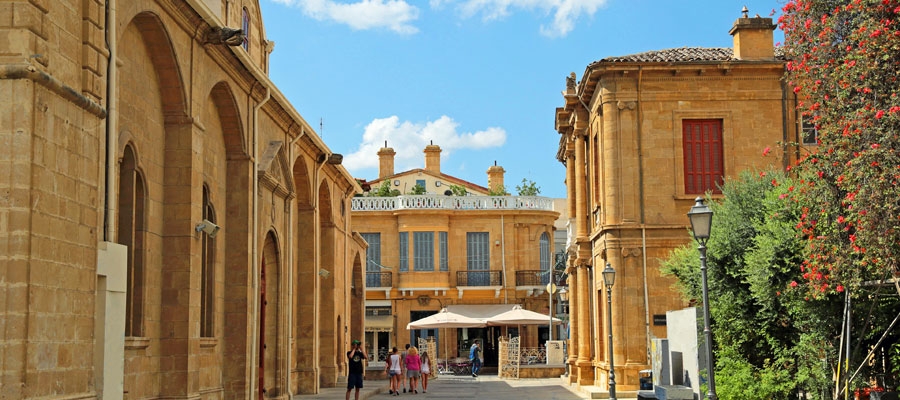
Ανακαλύψτε την παλιά Λευκωσία και τα Τείχη της
Η περιήγηση με τα πόδια στην διαδρομή “Ανακαλύψτε την παλιά Λευκωσία και τα Τείχη της” έχει σχεδιαστεί για να δώσει στους συμμετέχοντες μια γενική εικόνα της αρχαίας οχυρωμένης πόλης της Λευκωσίας και το πώς αυτή έχει εξελιχθεί στο πέρασμα των αιώνων.
Αυτός ο συναρπαστικός περίπατος δίνει ιδιαίτερη έμφαση στην εντυπωσιακή αρχιτεκτονική της πόλης – από τα Μεσαιωνικά Χρόνια μέχρι σήμερα – καθώς και σε μερικούς από τους ενδιαφέροντες και ιστορικά σημαντικούς ναούς της.
Οι συμμετέχοντες έχουν επίσης την ευκαιρία να επισκεφθούν τα διάφορα εργαστήρια και καταστήματα κατά μήκος της διαδρομής. Εκεί τεχνίτες, όπως κηροποιοί, σιδεράδες, κατασκευαστές καρεκλών, τσαγκάρηδες, ράφτες και χαλκοματάδες λειτουργούν τις βιοτεχνίες τους με τον παραδοσιακό τρόπο, προσφέροντας μια εικόνα για τα επαγγέλματα και τις ενασχολήσεις των περασμένων καιρών.
Για το πρόγραμμα (ημερομηνίες/ώρα) πατήστε εδώ
| Αφετηρία: | Παλιό Δημαρχείο Πλατεία Ελευθερίας, Λευκωσία |
| Τέρμα: | Παλιό Δημαρχείο Πλατεία Ελευθερίας, Λευκωσία |
| Μέρες / Ώρες: | Για το πρόγραμμα πατήστε εδώ |
| Υπολογιζόμενη Διάρκεια: | 3 ώρες. |
| Τιμή: | Δωρεάν |
| Κρατήσεις: | Γλώσσα ξενάγησης: Αγγλικά |
| Διοργανωτής: | Δήμος Λευκωσίας, YφΤ και ΕΤΑΠ Λευκωσίας |
| Πληροφορίες: | Τηλ. +357 22 674 264 |
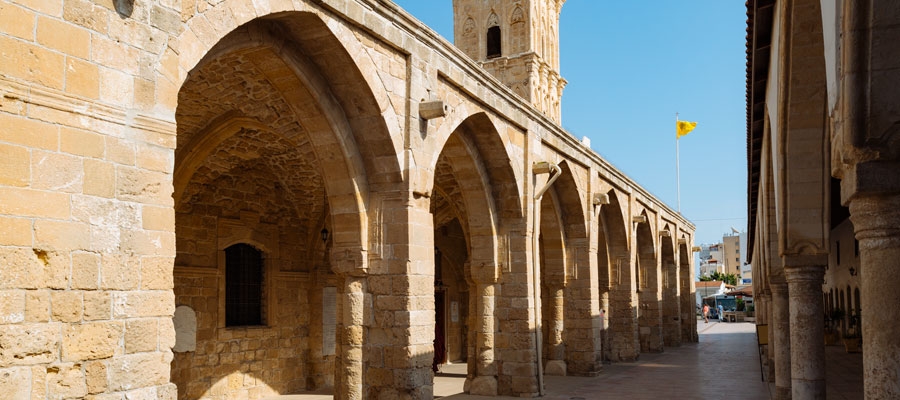
Περίπατος Λάρνακας
Ο Περίπατος της Λάρνακας περνά από τα διατηρητέα κτίρια της περιόδου της Αποικιοκρατίας που χρονολογούνται από το 1919 και συνεχίζεικατά μήκος της περίφημης Λεωφόρου των Φοινικούδων, του δημοφιλούςκαι πολυσύχναστουπαραλιακού δρόμου.
Στη συνέχεια οι συμμετέχοντες περιδιαβαίνουν τους δρόμους της πόλης, με τα παλιά, διατηρητέα κτίρια και φθάνουν στην «γειτονιά των καλλιτεχνών». Ακολούθως,επισκέπτονται τον μεγάλο ναό του Αγίου Λαζάρου του πολιούχου Αγίουτης πόλης.
Η διαδρομή περνά από το Ιατρικό Μουσείο Κυριαζή και καταλήγει στην νέα Δημοτική Αγορά της Λάρνακας.
| Αφετηρία: | Γραφείο Πληροφοριών Υφυπουργείου Τουρισμού, Κέντρο Πόλης |
| Τέρμα: | Νέα Δημοτική Αγορά |
| Μέρες / Ώρες: | Τετάρτες, 10:00 |
| Ελάχιστη συμμετοχή: | 5 άτομα |
| Περίοδος Λειτουργίας: | Όλο τον χρόνο. Μη διαθέσιμη κατά τις Δημόσιες Αργίες. |
| Υπολογιζόμενη Διάρκεια: | 2 ώρες και 30 λεπτά. |
| Τιμή: | Δωρεάν |
| Κρατήσεις: | Δεν χρειάζεται προκράτηση. |
| Διοργανωτής: | Δήμος Λάρνακας, Υφυπουργείο Τουρισμού και Σύνδεσμος Ξεναγών Κύπρου |
| Πληροφορίες: | Τηλ. +357 24 654 322 |
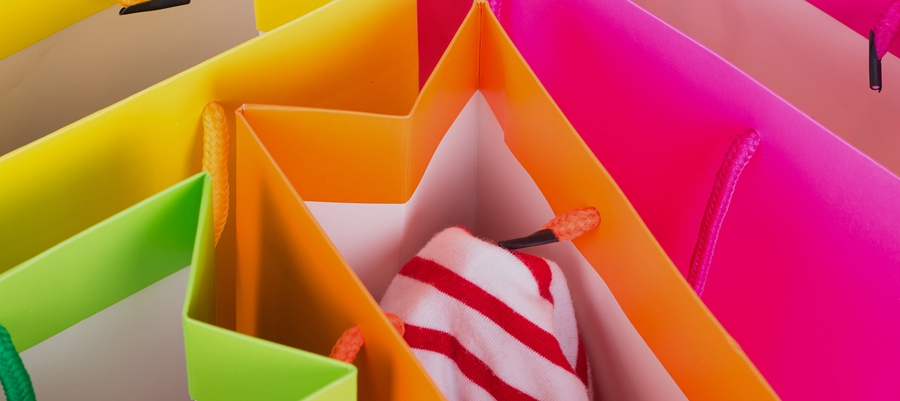
Authentic Shopping in Cyprus
Whilst Cyprus offers the modern shopping experience you would expect from a European country – with high streets and malls of brand names and independent retailers – the island also retains its traditional shopping allure with unique, locally made items.
With a rich history and many local handicrafts still practised as a speciality in individual villages and regions, you can pick up an authentic piece of the island’s heritage, from intricate lace tablecloths to rustic pottery. And the art of handmade or authentic continues with food and drink, such as painstakingly prepared sweets and delicacies and bottles of olive oil, or the world’s most historic wine.
The island is also popular for its custom-made jewellery and clothing, including gold, leather and tailoring, making it easy and cost-effective to have a one-off created specially to your specifications, taste and personality.
So, whether as a souvenir, a gift for loved ones, or just to treat yourself, there are a multitude of wonderful items you can purchase to take home… the only problem will be deciding what to buy, and how to fit it all in your suitcase!
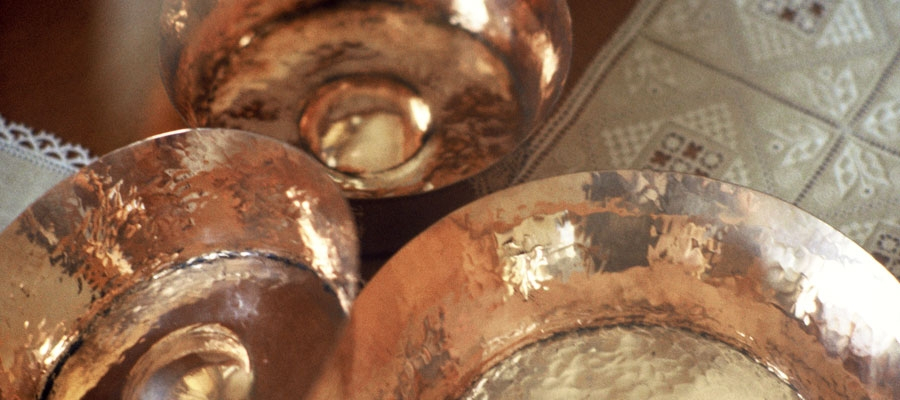
Traditional Handicrafts
Handicrafts are practised in individual villages where the traditional methods have been handed down from generation to generation, as well as at the island’s Handicraft Centres. Many workshops welcome visitors to observe them in action as they skilfully create in the old, preserved ways, whilst also providing information on the origins and history of the items being made, making them all the more special. You can also find a wide array of folk art at souvenir shops.
Lace: The famous ‘Lefkaritika’ embroidered linens are handmade lace pieces produced in the mountainous Larnaka (Larnaca) village of Lefkara since Venetian times. The linens are made in a very specific way in a process that is both intricate and time-consuming, making them highly prized. You can purchase the highly decorative tablecloths, curtains, placemats and dresser mats at local shops, or they can be made to order for something truly unique. Only lace made in the traditional way is considered to be authentic and is included on the UNESCO Intangible World Heritage List. Legend has it that the famous painter, Leonardo da Vinci himself visited the village in 1481 and bought a lace altar cloth, which he donated to Milan cathedral.
Another form of lace embroidery – that of narrow knit lace – is also practised in many traditional villages, and makes a lovely souvenir to take back home, or as a gift.
Woven goods: The practise of weaving was highly developed during Byzantine times and is still traditionally practised in the Pafos (Paphos) village of Fyti, which makes colourful geometric textured designs on un-dyed cotton cloth – particularly rectangular napkins, tablecloths and bed covers. The pieces can be found in Fyti, as well as in the Handicraft Centres and some souvenir shops.
Pottery: Pottery is a very ancient craft on the island, with the red clay vessels constituting an integral part of daily life in olden times when they were used to store and transport liquids such as wine and water, as well as for the storage of agricultural products. The tradition of pottery making prevails in the villages of Kornos [Larnaka (Larnaca) region] and Foini [Lemesos (Limassol) region], or you can find authentic pieces at the Cyprus Handicraft Centre.
Copperware: Cyprus is traditionally the island of copper, and the base metal was an important export for the island during ancient times. Coppersmiths still make copper pots and kettles today, as well as long-handled pots ‘mbriki’ for ‘cooking’ Cypriot coffee which are available from workshops and souvenir shops. If you are taking back a packet of Cypriot coffee, it is advisable to take a mbriki back too!
Silverware: The art of filigree, known as ‘trifouri’, is a delicate craft that twists fine silver wire into beautiful hand-made jewellery such as earrings, pendants and brooches, as well as decorative cutlery and tableware, with a resulting ‘cobweb’ effect. This traditional craft is still practised mainly in Lefkara, although you can find filigree pieces in jewellery shops and souvenir shops too.
Basketry: Basket making dates from ancient times, when baskets were made to serve a range of specific practical purposes from carrying agricultural produce to dressing bottles to avoid liquids leaking. Baskets are still traditionally made in the Pafos village of Ineia, the Lemesos village of Akrotiri, and the Famagusta villages of Xylotympou and Avgorou, as well as at the Handicraft Centre and other workshops. They come in all shapes and sizes, with the colourful, flat ‘Talari’, most commonly used as a wall decoration in modern times.
Decorated Gourds: The gourd is a vegetable of the marrow family that hangs from a climbing vine and comes in a range of shapes and sizes. The dried vegetable has been decorated and used for practical purposes on the island for many years, with the bottle-shaped gourd the most useful; traditionally used as a wine carafe, candlestick and container for salt or olives. The custom of decorating gourds with geometric patterns or animal and flower motifs is done by knife or with a hot poker, and is still practiced in villages today. Decorated gourds can also be found in souvenir shops.
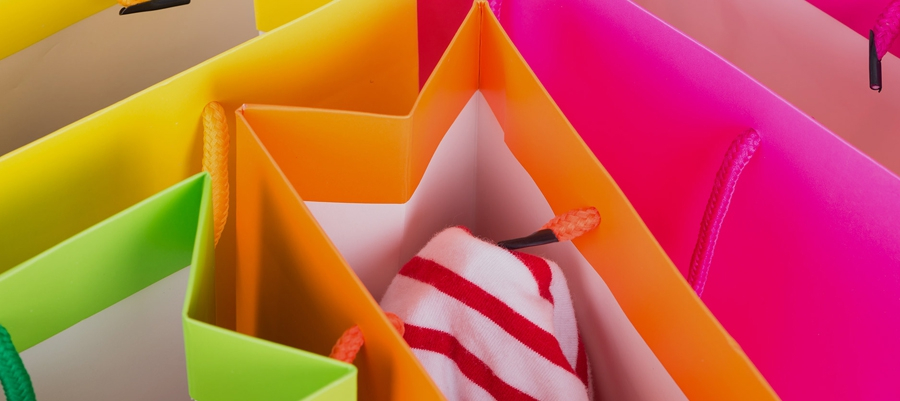
Fashion, Jewellery & Beauty
Feel and look great after a holiday to Cyprus by having something made especially to your measurements or design, or discovering the beauty secrets of Ancient Greek Goddesses! With custom-made available at very reasonable prices, and many establishments offering a quick turnaround time for visitors, you can easily become the proud owner of a piece that will be uniquely yours, and will always remind you of your trip to Cyprus.
Jewellery: The quality of gold and silver in Cyprus is very high, as well as competitively priced. Aside from classic pieces, many jewellers also create seasonal collections relating to the history and customs of the island, including pomegranates, ancient idols, evil eyes (to ward off bad spirits) and sea-themed pieces. Having a custom-made piece of jewellery designed and created to your specifications is also great value, and will leave you with a one-of-a-kind heirloom.
Leather: Leather goods – including bags, wallets, belts, waistcoats, jackets, trousers and skirts – are both high quality and competitively priced on the island. Whilst there are many pieces ready to buy off-the-peg at the island’s dedicated leather shops, visitors can also have something custom-made for an original and distinctive item that is not only tailored to specific requirements, but offers fantastic value.
Tailoring: Many locals have occasion wear tailored for big events – such as weddings and christenings – and as such, seamstresses and tailors have a large selection of fabrics and designs available. Custom-made shirts, three-piece suits, ball gowns and wedding dresses are very competitively priced compared to other countries, and can be made-to-order in a reasonably quick time frame after choosing your fabric and being measured.
Beauty Products: A range of beauty products are made with a number of traditional Cypriot ‘ingredients’ from nature, including donkey milk, olive oil, rose and herbs. Olive oil soap is the most widely available product, whilst other products are more specialised.
